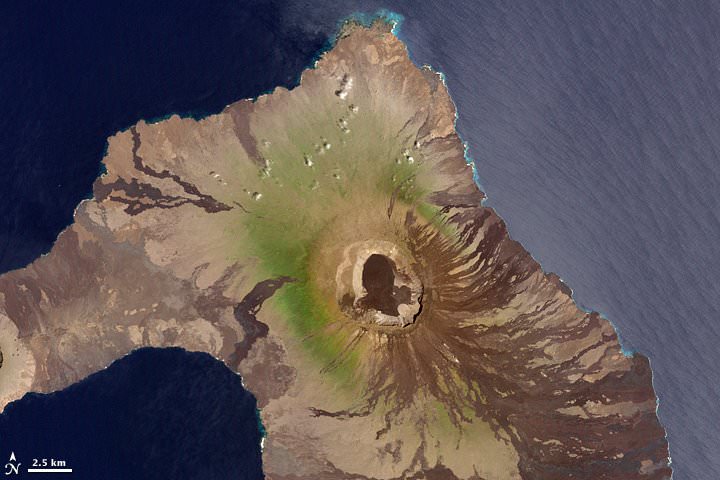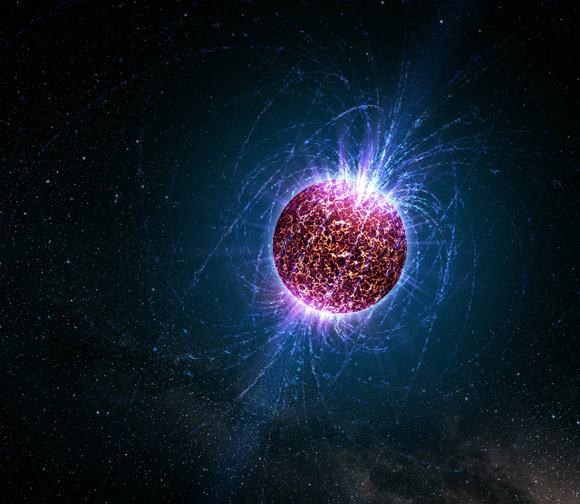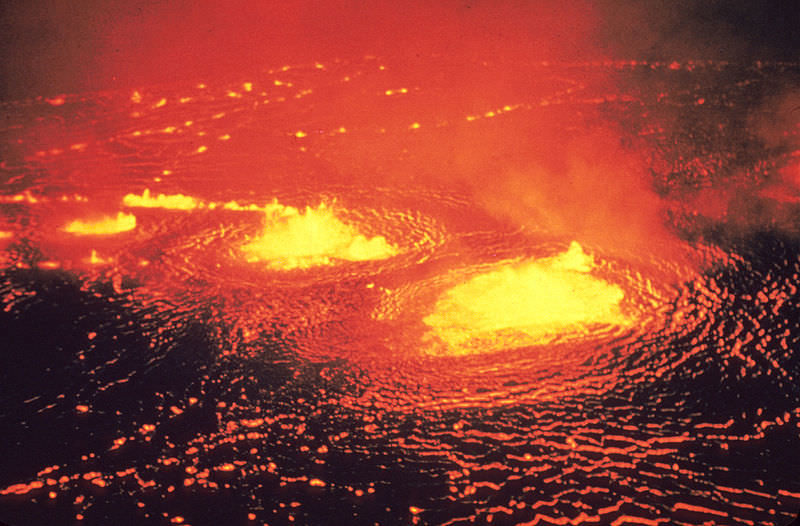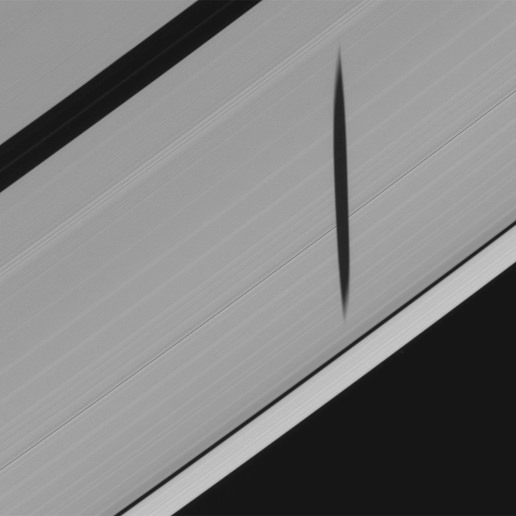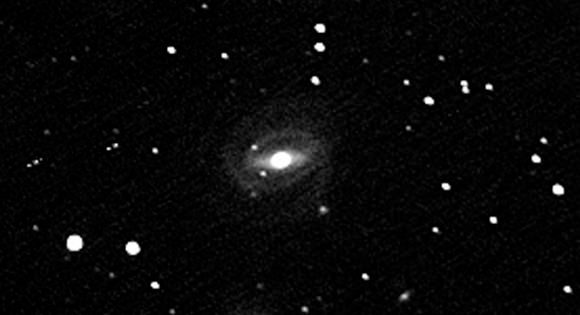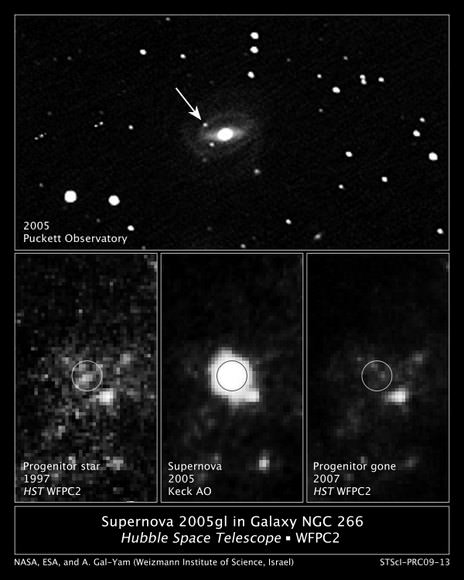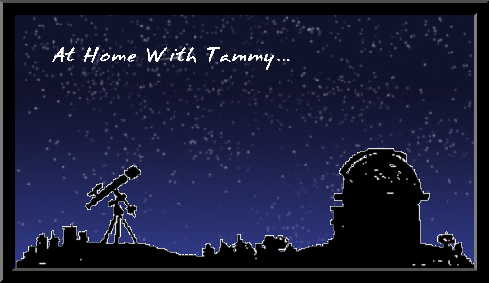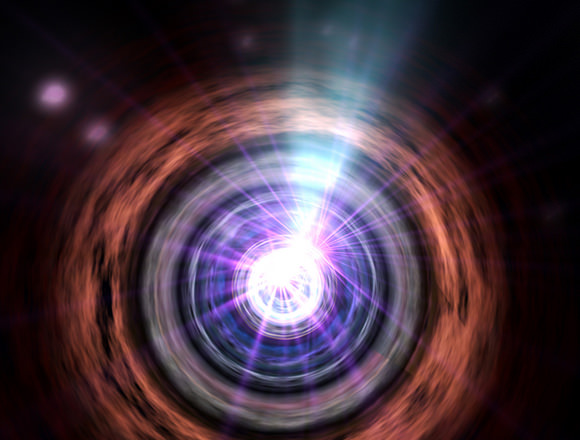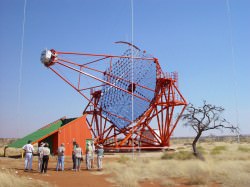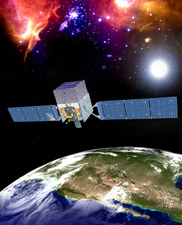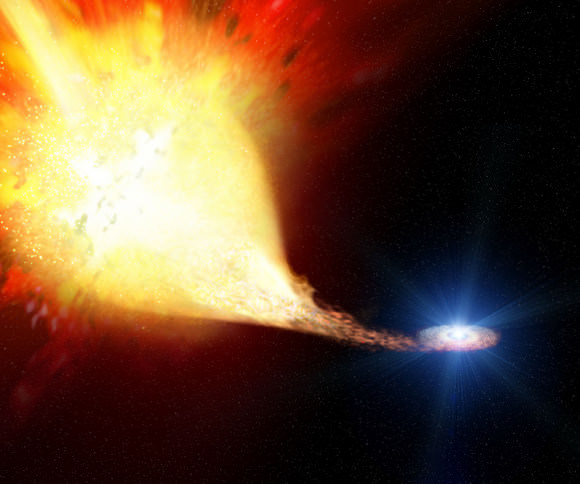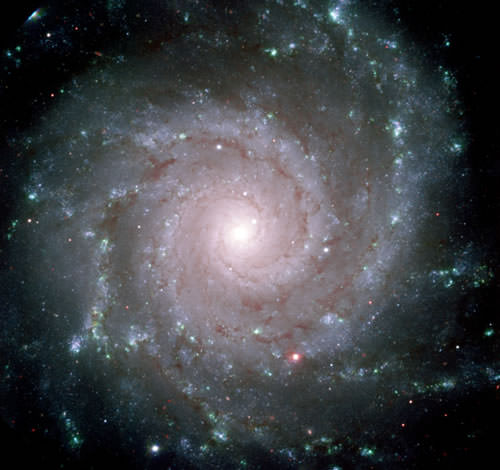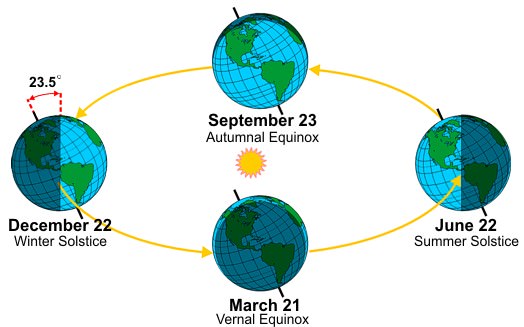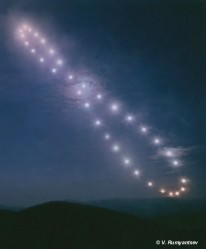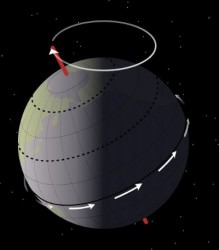Greetings, fellow SkyWatchers! That’s right… It’s that time again. Equinox and upcoming New Moon means that many of us are going to try and kill ourselves to capture all 110 Messier Catalog objects in just one night. When I was a much younger lass, I used to think that was fun. Now that I’m considerably older and have to pay a physical price for staying outside all night in the cold? Well… It’s not quite as appealing as it used to be. But, I ain’t ready for the dirt nap just yet. If you think you’ve still got what it takes, then follow me…
Friday, March 20, 2009 – Since the beginning of the year, the Sun has been traveling low in the sky, moving higher each day until reaching northern hemisphere vernal equinox. Today the Sun will rise exactly in the east and set exactly in the west – precisely 12 hours later – making it possible for most observers to see all 110 Messier objects in a single night. The Messier Marathon isn’t easy. This year,why not try your own style of marathoning, as we take a less frenzied pace over the next 11 days, enjoying these splendid objects ‘‘ten at a time.’’
 When the sky darkens enough to find guidestar Delta Ceti, the M77 (RA 02 42 40.83 Dec -00 00 48.4) spiral galaxy will be your first and the M74 (RA 01 36 41.84 Dec +15 46 59.6) spiral galaxy east of Eta Pisces will be your second mark. Both are telescopic only, and an extreme challenge due to low position. Next is M33, west of Alpha Triangulum. With ideal skies, the Pinwheel Galaxy can be seen in binoculars, but sky glow makes this huge, low-surface brightness spiral difficult for even telescopes at low power. M31 (RA 00 42 44.31 Dec +41 16 09.4), the Andromeda Galaxy, is a delightful capture for both binoculars and scopes just west of Nu Andromedae. For the telescope, two more on the list are companions to M31: elliptical M32 (RA 00 42 41.87 Dec +40 51 57.2) on its southeastern edge, and M110 (RA 00 40 22.00 Dec +41 41 07.0), to the northwest.
When the sky darkens enough to find guidestar Delta Ceti, the M77 (RA 02 42 40.83 Dec -00 00 48.4) spiral galaxy will be your first and the M74 (RA 01 36 41.84 Dec +15 46 59.6) spiral galaxy east of Eta Pisces will be your second mark. Both are telescopic only, and an extreme challenge due to low position. Next is M33, west of Alpha Triangulum. With ideal skies, the Pinwheel Galaxy can be seen in binoculars, but sky glow makes this huge, low-surface brightness spiral difficult for even telescopes at low power. M31 (RA 00 42 44.31 Dec +41 16 09.4), the Andromeda Galaxy, is a delightful capture for both binoculars and scopes just west of Nu Andromedae. For the telescope, two more on the list are companions to M31: elliptical M32 (RA 00 42 41.87 Dec +40 51 57.2) on its southeastern edge, and M110 (RA 00 40 22.00 Dec +41 41 07.0), to the northwest.
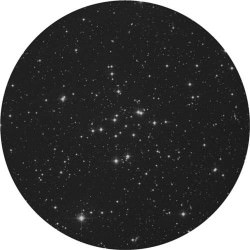 Head northwest for two open clusters visible to both telescopes and binoculars. You’ll find M52 (RA 23 24 48.00 Dec +61 35 -0.0) easiest by identifying Alpha and Beta Cassiopeiae, drawing a mental line between them, and extending it the same distance northwest of Beta. Next, hop north of Delta Cassiopeiae to pick up our eighth object—open cluster M103 (RA 01 33 24.00 Dec +60 39 00.0). Head south toward Perseus to telescopically locate the M76 (RA 01 42 19.95 Dec +51 34 31.1) planetary nebula just north of Phi. Binoculars are all that’s needed to see M34, an open cluster located roughly halfway between Algol and the lovely double Almach. As you can see, such a quick journey takes away some of the beauty of learning the history and science behind the objects… But the race is on!
Head northwest for two open clusters visible to both telescopes and binoculars. You’ll find M52 (RA 23 24 48.00 Dec +61 35 -0.0) easiest by identifying Alpha and Beta Cassiopeiae, drawing a mental line between them, and extending it the same distance northwest of Beta. Next, hop north of Delta Cassiopeiae to pick up our eighth object—open cluster M103 (RA 01 33 24.00 Dec +60 39 00.0). Head south toward Perseus to telescopically locate the M76 (RA 01 42 19.95 Dec +51 34 31.1) planetary nebula just north of Phi. Binoculars are all that’s needed to see M34, an open cluster located roughly halfway between Algol and the lovely double Almach. As you can see, such a quick journey takes away some of the beauty of learning the history and science behind the objects… But the race is on!
 Saturday, March 21, 2009 – Today, note the 1927 birth on this date of Halton Christian Arp, one of the most noted minds of our time regarding the origin and evolution of galaxies. Through his incredible study of peculiar galaxies and quasars, we are no longer able to assume that redshift is a uniform indicator of distance, or that the two are unrelated.
Saturday, March 21, 2009 – Today, note the 1927 birth on this date of Halton Christian Arp, one of the most noted minds of our time regarding the origin and evolution of galaxies. Through his incredible study of peculiar galaxies and quasars, we are no longer able to assume that redshift is a uniform indicator of distance, or that the two are unrelated.
Tonight our marathon will be more relaxed because the fastest-setting objects are already completed. Take a moment to enjoy M45 (RA 03 47 24.00 Dec +24 07 00.0), the Pleiades. The ‘‘Seven Sisters’’ are easily visible high in the west, and their cool, blue beauty is incomparable in binoculars or telescopes. Head for Lepus and identify Beta and Epsilon. Triangulating south with this pair is 5th-magnitude star ADS3954, and the small globular M79 (RA 05 24 10.59 Dec -24 31 27.3) to its northeast. M42 (RA 05 35 17.30 Dec -05 23 28.0) , the Orion Nebula, is next. M43 (RA 05 35 31.00 Dec -05 16 12.0) is part of M42 to the north northeast. The next two objects are M78 (RA 05 46 46.70 Dec +00 00 50.0), northeast of Zeta Orionis and M1 (RA 05 34 31.97 Dec +22 00 52.1), the Crab Nebula, northwest of Zeta Tauri.
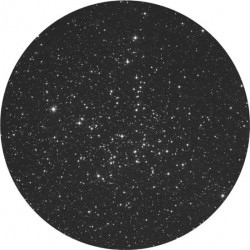 Now take a few minutes to relax. The remaining objects on tonight’s list are all very easy, well positioned, and observable with binoculars. Are you ready? Then let’s go! Open cluster M35 (RA 06 09 06.00 Dec +24 21 00.0) is northwest of the toe of Gemini – Eta. The next stop is Auriga, directly between Theta and southern Beta. Slightly to the east you’ll find open cluster M37 (RA 05 52 19.00 Dec +32 33 12.0). Now use Theta and western Iota. Roughly halfway between them and in the center of Auriga you will find open cluster M38 (RA 05 28 43.00 Dec +35 51 18.0). Hop southeast to capture M36 (RA 05 36 12.00 Dec +34 08 24.0).
Now take a few minutes to relax. The remaining objects on tonight’s list are all very easy, well positioned, and observable with binoculars. Are you ready? Then let’s go! Open cluster M35 (RA 06 09 06.00 Dec +24 21 00.0) is northwest of the toe of Gemini – Eta. The next stop is Auriga, directly between Theta and southern Beta. Slightly to the east you’ll find open cluster M37 (RA 05 52 19.00 Dec +32 33 12.0). Now use Theta and western Iota. Roughly halfway between them and in the center of Auriga you will find open cluster M38 (RA 05 28 43.00 Dec +35 51 18.0). Hop southeast to capture M36 (RA 05 36 12.00 Dec +34 08 24.0).
Although this pace may seem rather scandalous, take stock of what you’ve accomplished! You’ve visited 20 Messier objects in just two nights. . .with time to spare. Return to your favorite objects and enjoy them. As Halton Arp once said:
“Sometimes I think that Astronomy is not so much a science as a series of scandals.”
Sunday, March 22, 2009 – Born on this date in 1394 was Ulugh Beg, builder of the first observatory. Beg’s chart listed 994 stars and was the first produced since Hipparchus! In 1799, Friedrich Wilhelm August Argelander, who cataloged the positions and magnitudes of 324,188 variable stars, was born!
Now get Sirius, go south, and start our list for tonight with open cluster M41. Return to Sirius and head a fist-width east/northeast for M47 (RA 07 36 36.00 Dec -14 29 -0.0). Dimmer, more compressed M46 (RA 07 41 42.00 Dec -14 49 00.0) is east. Drop slowly south about three fingerwidths and encounter lively M93 (RA 07 44 36.00 Dec -23 52 00.0)! Incredibly colorful open cluster M50 (RA 07 02 40.47 Dec -08 21 50.5) is roughly one-third the distance between Sirius and Procyon. Drop south-southeast of Zeta Monocerotis for dim open cluster M48 (RA 08 13 42.00 Dec -05 45 00.0). The ‘‘Beehive’’ – M44 (RA 08 40 24.00 Dec +19 41 -0.0) – is just north-northwest of Delta Cancri. Continue south to Alpha, and then west for M67 (RA 08 51 18.00 Dec +11 48 00.0). It will appear as a fine haze to binoculars, but telescopes see a spectacular cloud of similar magnitude resolvable stars.
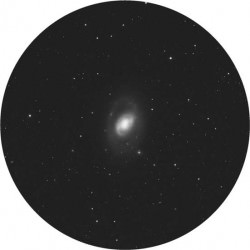 Telescopes, head a fist-width east Regulus for finderscope stars 52 and 53, and head between them. Just about 1.5 degrees south of 52 is elliptical galaxy M105 (RA 10 47 49.60 Dec +12 34 53.9). Larger scopes see two additional faint galaxies, NGC 3384 and NGC 3389, to M105’s west. Continue another degree south toward star 53 for the silver-gray beauty of M96 (RA 10 46 45.78 Dec +11 49 10.2). Enjoy its bright nucleus and wispy arms!
Telescopes, head a fist-width east Regulus for finderscope stars 52 and 53, and head between them. Just about 1.5 degrees south of 52 is elliptical galaxy M105 (RA 10 47 49.60 Dec +12 34 53.9). Larger scopes see two additional faint galaxies, NGC 3384 and NGC 3389, to M105’s west. Continue another degree south toward star 53 for the silver-gray beauty of M96 (RA 10 46 45.78 Dec +11 49 10.2). Enjoy its bright nucleus and wispy arms!
Now relax and enjoy a spring evening with two meteor showers. The northern hemisphere Camelopardalids have no definite peak, and a fall rate of only 1 per hour. They’re the slowest recorded meteors, entering our atmosphere at speeds of only 7 kilometers per second! Far more interesting for both hemispheres is tonight’s peak of the March Geminids. These slower than normal meteors will be fun to watch! When you see a bright streak, trace it back to its point of origin: which did you see, a Camelopardalid, or a March Geminid?
Monday, March 23, 2009 – In 2001 on this date the Mir space station ended 15 years in orbit with a fiery return. This date is also the 1837 birth of Richard Anthony Proctor who showed the stars’ motion, distribution, and relation to nebulae. In 1829, Norman Pogson, creator of the magnitude scale still used today, was born. The year 1749 saw the birth of Pierre-Simon Laplace, who theorized that the Solar System formed from a nebula, formulated mathematical probability, and helped create the metric system!
Return to Leo tonight. Identify 52 Leonis and drop south past M105 for M95 (RA 10 43 57.70 Dec +11 42 13.7), which isn’t as bright or large as neighboring M96 (RA 10 46 45.78 Dec +11 49 10.2). Small scopes see central brightening, and large ones begin resolution of this awesome barred spiral. Look to the southwestern star of the three marking Leo’s hips – Theta Leonis. South is faint star 73, and a degree east-southeast is the pairing of M65 and M66. Western M65 (RA 11 18 55.78 Dec +13 05 32.3) and eastern M66 (RA 11 20 15.07 Dec +12 59 21.6) are both beautiful spirals worthy of far more time and attention. Head north for another same-field pair – M81 and M82 – in Ursa Major. Draw a mental line between Gamma and Alpha. Extend the line beyond Alpha the same distance. Begin an eyepiece sweep to locate them. The southernmost is stunning, bright-cored M81 (RA 09 55 33.17 Dec +69 03 55.1). North is the broken, spindle-shaped peculiar galaxy M82 (RA 09 55 52.19 Dec +69 40 48.8). Southeast of Beta Ursae Majoris (UM) is the edge-on galaxy M108 (RA 11 11 31.29 Dec +55 40 31.0).
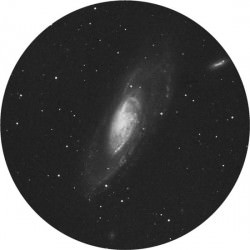 Continue another half degree southeast for the Jupiter-sized planetary M97 (RA 11 14 47.73 Dec +55 01 08.5). Continue south to Gamma UM for same-field M109 (RA 11 57 35.90 Dec +53 22 35.0). The last in Ursa Major is an error on Messier’s part. M40 (RA 12 22 24.00 Dec +58 05 -0.0) is actually double star WNC4, located northeast of 70 Ursae Majoris. Now to Canes Venatici and our last object tonight: Alpha and northern Beta are easily recognizable to the east of the last star in the handle of the Big Dipper (Eta). You’ll find the soft-spoken spiral galaxy M106 (RA 12 18 57.54 Dec +47 18 14.3) almost directly midway between Beta CVn and Gamma UM less than 2 degrees south of star 3. Add as much aperture as you can to this gorgeous study!
Continue another half degree southeast for the Jupiter-sized planetary M97 (RA 11 14 47.73 Dec +55 01 08.5). Continue south to Gamma UM for same-field M109 (RA 11 57 35.90 Dec +53 22 35.0). The last in Ursa Major is an error on Messier’s part. M40 (RA 12 22 24.00 Dec +58 05 -0.0) is actually double star WNC4, located northeast of 70 Ursae Majoris. Now to Canes Venatici and our last object tonight: Alpha and northern Beta are easily recognizable to the east of the last star in the handle of the Big Dipper (Eta). You’ll find the soft-spoken spiral galaxy M106 (RA 12 18 57.54 Dec +47 18 14.3) almost directly midway between Beta CVn and Gamma UM less than 2 degrees south of star 3. Add as much aperture as you can to this gorgeous study!
Tuesday, March 24, 2009 – On this date in 1835 Josef Stefan was born, a physicist whose word was ‘‘law’’ to radiation! In 1941 on this date, Joseph Taylor, Jr, the radio astronomer who jointly discovered the first binary pulsar, was born. Last, let’s celebrate the 1893 birth of Walter Baade, who studied the Andromeda Galaxy’s core with the 100’’ Hooker telescope, resolving it (and two different Cepheids) for the first time.
Tonight, identify Canes Venatici’s two brightest stars, Alpha and Beta. Galaxy M94 (RA 12 50 52.63 Dec +41 07 09.3) forms a triangle with Alpha and Beta CnV, the apex toward Eta Ursae Majoris (UM). M63 (RA 13 15 49.28 Dec +42 01 46.5) is one-third the distance between Beta CnV and Eta UM. M51 (RA 13 29 52.37 Dec +47 11 40.8) resides near visual star 24 CnV. You’ll find M101 (RA 14 03 12.51 Dec +54 20 53.1) to the other side of Alkaid. The accepted designation for M102 (RA 14 03 12.59 Dec +54 20 56.7) is lenticular galaxy NGC 5866, located southeast of Iota Draconis. You’ll find small globular cluster M53 (RA 13 12 55.30 Dec +18 10 09.0) northeast of Alpha Comae. M64 (RA 12 56 43.88 Dec +21 41 00.1) is about one-third the distance from Alpha Comae to Eta UM. M3 (RA 13 42 11.23 Dec +28 22 31.6) is one-third the distance between Arcturus and Cor Caroli.
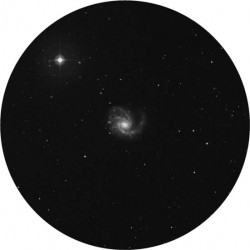 Now for the incredibly rich galaxy fields near Coma Berenices and Virgo. Identify the easternmost star in Leo – Denebola – and head a fist-width due east. M98 (RA 12 13 48.29 Dec +14 54 01.2) is west of star 6 Comae. Return to 6 Comae and drop 1 degree southeast for M99 (RA 12 18 49.52 Dec +14 25 00.4).
Now for the incredibly rich galaxy fields near Coma Berenices and Virgo. Identify the easternmost star in Leo – Denebola – and head a fist-width due east. M98 (RA 12 13 48.29 Dec +14 54 01.2) is west of star 6 Comae. Return to 6 Comae and drop 1 degree southeast for M99 (RA 12 18 49.52 Dec +14 25 00.4).
Congratulations! In just 5 days you have logged 50 of the brightest and most beautiful members of the deep sky!
Wednesday, March 25, 2009 – Today celebrates the 1786 birth of Giovanni Amici, inventor of the achromatic lens, and in 1923, the birth of Kenneth Linn Franklin, radio astronomer. Tonight continue our marathon around midnight. It’s time to dance…
Leo’s easternmost bright star Denebola points to 6 Comae, about three finger-widths east. Two degrees northeast of 6 you’ll pass two 5th-magnitude stars leading to M100 (RA 12 22 54.95 Dec +15 49 19.5), the largest-appearing galaxy in the Coma-Virgo cluster. Continue 2 degrees north for bright yellow 11 Comae. One degree northeast is 9th magnitude, round M85 (RA 12 25 24.23 Dec +18 11 26.9). Try a “trick of the trade” to locate two more. Return to 6 Comae, relocate M99, turn off your drive, and take a break for 14 minutes. When you return, the elongated form and near-stellar nucleus of M88 (RA 12 31 59.34 Dec +14 25 13.4) will have ‘‘drifted’’ into view. Wait another 2–3 minutes, and the faint, barred spiral M91 (RA 12 35 26.58 Dec +14 29 45.1) will join the show in a 1-degree field of view.
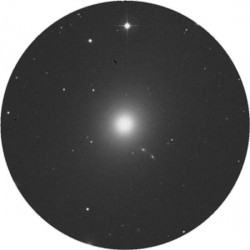 Now locate bright Vindemiatrix (Epsilon Virginis), a handspan due east of Denebola. Hop 4.5 degrees west and a shade north to locate the largest elliptical galaxy presently known, M60 (RA 12 43 40.19 Dec +11 33 08.9). This magnitude 9 galaxy can be spotted with binoculars, but a telescope will reveal faint NGC4647, which only appears to be interacting with M60. In the field west is our next Messier: bright-cored elliptical M59 (RA 12 42 02.39 Dec +11 38 45.1). (Yes, there’s more, but not tonight. Let’s keep our studies to only the Messiers!) Move a degree west for fainter M58 (RA 12 37 43.48 Dec +11 49 04.4). About a degree north will locate face-on spiral M89 (RA 12 35 39.81 Dec +12 33 22.8). One half degree northeast is delightful 9.5 magnitude M90 (RA 12 36 50.08 Dec +13 09 45.7), whose dark dust lanes show in larger scopes. Continue 1.5 degrees southwest for M87 (RA 12 30 49.42 Dec +12 23 28.0), the first radio source galaxy discovered. M87 contains a black hole, and more than 4,000 globular clusters surround its elliptical form.
Now locate bright Vindemiatrix (Epsilon Virginis), a handspan due east of Denebola. Hop 4.5 degrees west and a shade north to locate the largest elliptical galaxy presently known, M60 (RA 12 43 40.19 Dec +11 33 08.9). This magnitude 9 galaxy can be spotted with binoculars, but a telescope will reveal faint NGC4647, which only appears to be interacting with M60. In the field west is our next Messier: bright-cored elliptical M59 (RA 12 42 02.39 Dec +11 38 45.1). (Yes, there’s more, but not tonight. Let’s keep our studies to only the Messiers!) Move a degree west for fainter M58 (RA 12 37 43.48 Dec +11 49 04.4). About a degree north will locate face-on spiral M89 (RA 12 35 39.81 Dec +12 33 22.8). One half degree northeast is delightful 9.5 magnitude M90 (RA 12 36 50.08 Dec +13 09 45.7), whose dark dust lanes show in larger scopes. Continue 1.5 degrees southwest for M87 (RA 12 30 49.42 Dec +12 23 28.0), the first radio source galaxy discovered. M87 contains a black hole, and more than 4,000 globular clusters surround its elliptical form.
Now take a break… Things are about to get a lot hotter!
Thursday, March 26, 2009 – Starting at midnight now. Dawn is only a few hours away and the beginning of a new day. It is also a New Moon and the perfect time to try all 110 Messier objects in just one night! What’s that? You want to keep on going ten at a time? Then let’s do just that…
 Slightly more than a degree northwest of M87 is the same-field pair, western M84 (RA 12 25 03.74 Dec +12 53 13.1) and eastern M86 (RA 12 26 12.20 Dec +12 56 44.5). Head to 31 Virginis and identify splendid variable R a degree west. Two degrees northwest is galaxy M49 (RA 12 29 46.76 Dec +07 59 59.9). Shift 3 degrees southwest for the handsome yellow double 17 Virginis. A half degree south is large face-on spiral M61. Now go for Spica, and 11 degrees due west. M104 (RA 12 39 59.43 Dec -11 37 23.0), the Sombrero Galaxy, will be your reward for a job well done. Congratulations! You’ve just seen 15 of the finest galaxies in the Coma–Virgo region in just hours, and our “Marathon” continues.
Slightly more than a degree northwest of M87 is the same-field pair, western M84 (RA 12 25 03.74 Dec +12 53 13.1) and eastern M86 (RA 12 26 12.20 Dec +12 56 44.5). Head to 31 Virginis and identify splendid variable R a degree west. Two degrees northwest is galaxy M49 (RA 12 29 46.76 Dec +07 59 59.9). Shift 3 degrees southwest for the handsome yellow double 17 Virginis. A half degree south is large face-on spiral M61. Now go for Spica, and 11 degrees due west. M104 (RA 12 39 59.43 Dec -11 37 23.0), the Sombrero Galaxy, will be your reward for a job well done. Congratulations! You’ve just seen 15 of the finest galaxies in the Coma–Virgo region in just hours, and our “Marathon” continues.
Five degrees south-southeast of Beta Corvi is your marker star, the double A8612, for the same field globular M68 (RA 12 39 28.01 Dec -26 44 34.9), and the Southern Pinwheel, M83 (RA 13 37 00.78 Dec -29 51 58.6) is 10 degrees southeast of Gamma Hydrae. Now make a wide move and head southeast of Arcturus for Alpha Serpentis. Eight degrees southwest is outstanding globular cluster M5 (RA 15 18 33.75 Dec +02 04 57.7) sharing the field with 5 Serpens. Now locate the ‘‘keystone’’ shape of Hercules, and identify Eta in its northwest corner. One-third the way between it and southern Zeta is the fantastic M13 (RA 16 41 41.44 Dec +36 27 36.9), the “Great Hercules Globular Cluster.” More difficult is M92 (RA 17 17 07.27 Dec +43 08 11.5), because there are no stars to guide you. Try this trick: using the two northernmost stars in the “keystone” asterism and form an equilateral triangle in your mind, with its apex to the north. Point your scope there. Way to go, astronomer! You have now passed the most difficult part of the “mini-thon,” and just think of the rewards! In less than a week, you have conquered over half of the Messier catalog.
While you spend a sleepy day, think about a French amateur astronomer who was watching a round black spot transit the Sun today in 1859. His name was Lescarbault, and he was sure he’d witnessed a new planet, which he christened “Vulcan.” Nathaniel Bowditch was also born this date in 1773. He also devised the “Bowditch Curve,” which applies in both physics and astronomy.
Be sure to join us next Friday as we conclude our Messier Marathon special! Until then? Dreams really do come true when you keep on reaching for the stars….
This week’s awesome images are (in order): M74 and M34 (credit – Palomar Observatory, courtesy of Caltech), Halton Arp (historical image), M38, M96, M106, M99, M87 and M61 (credit – Palomar Observatory, courtesy of Caltech). Thank you so much!!

